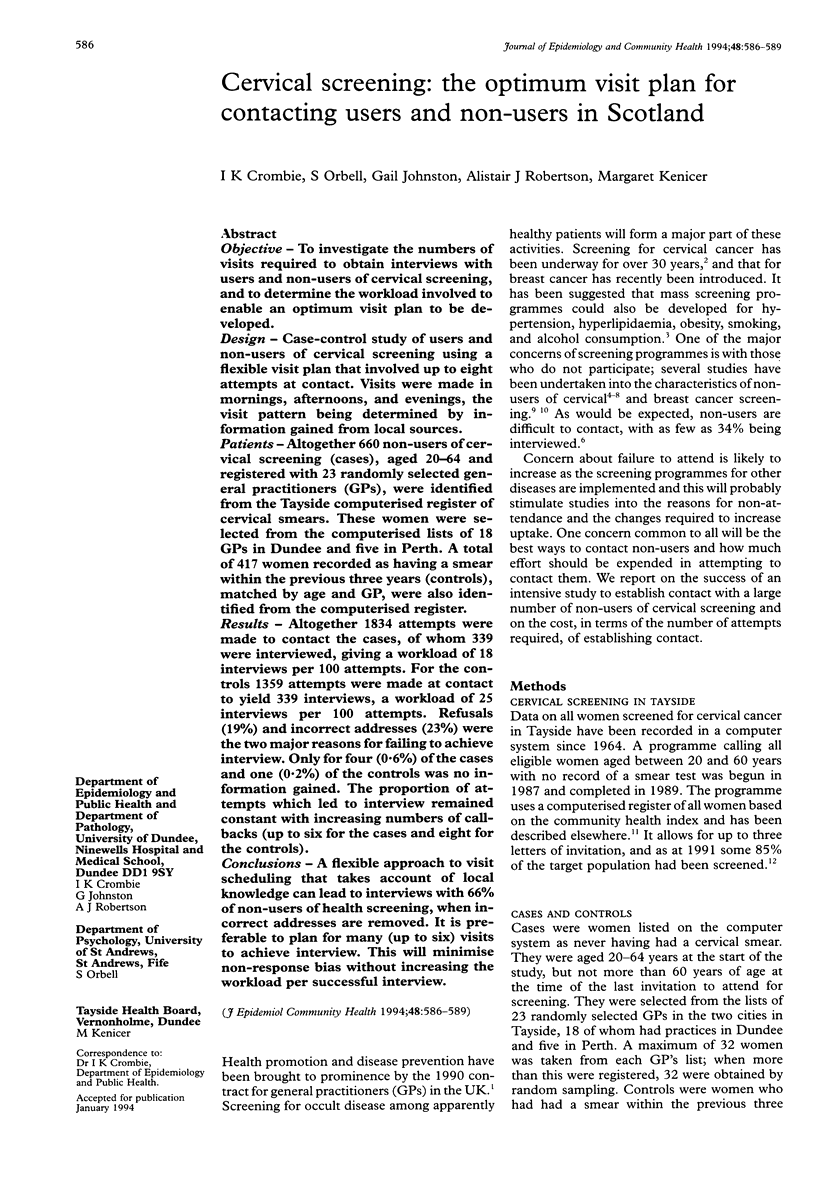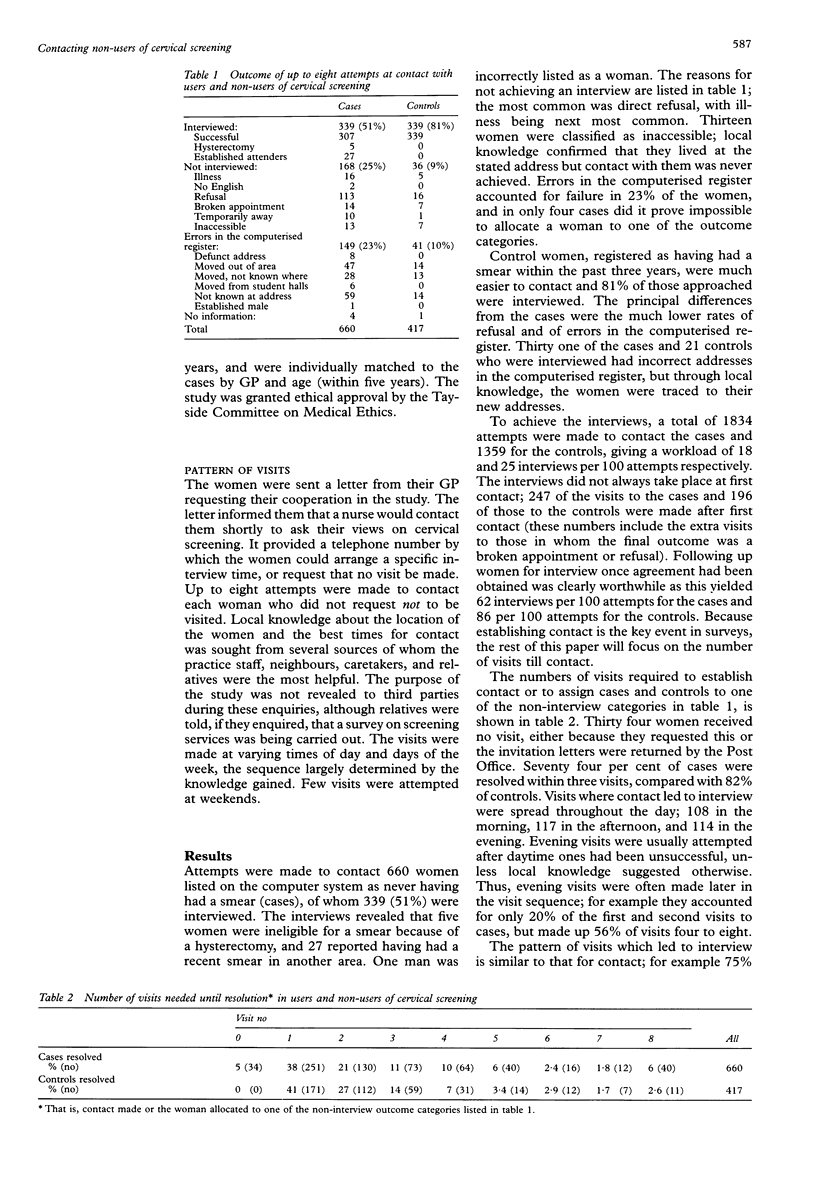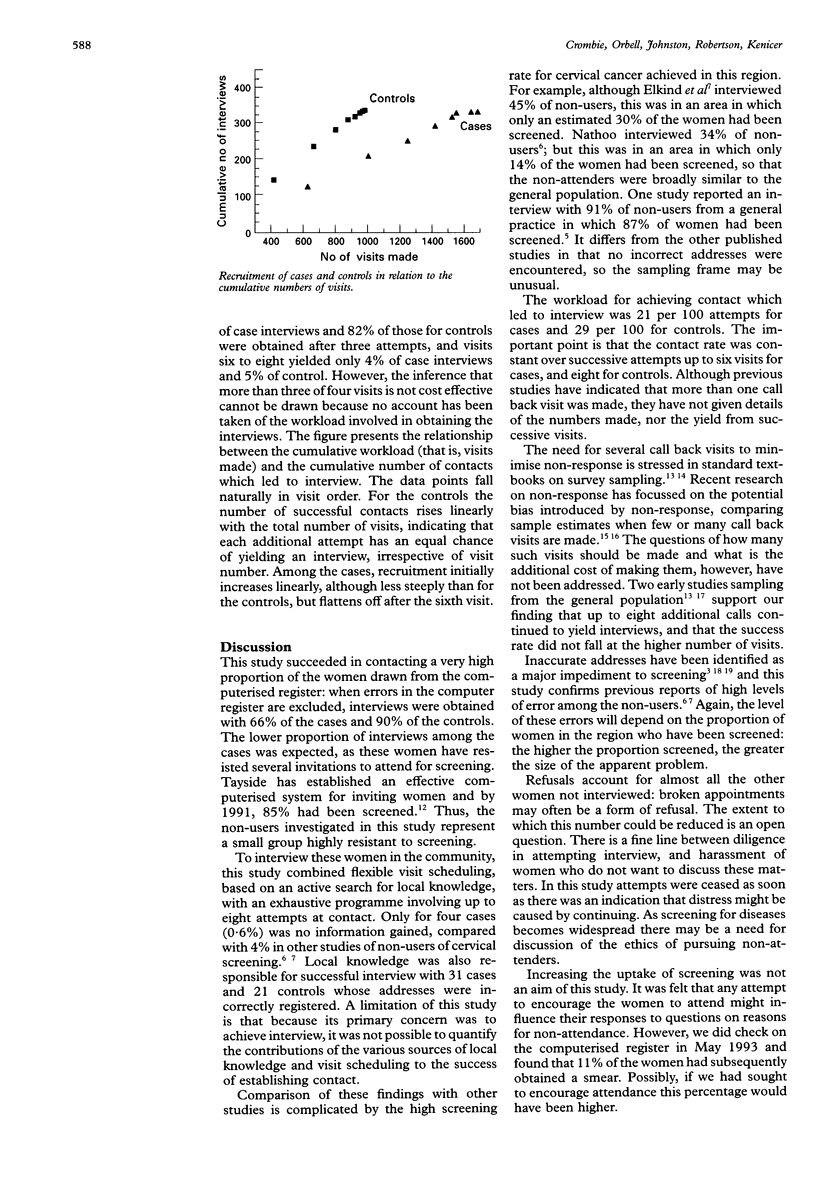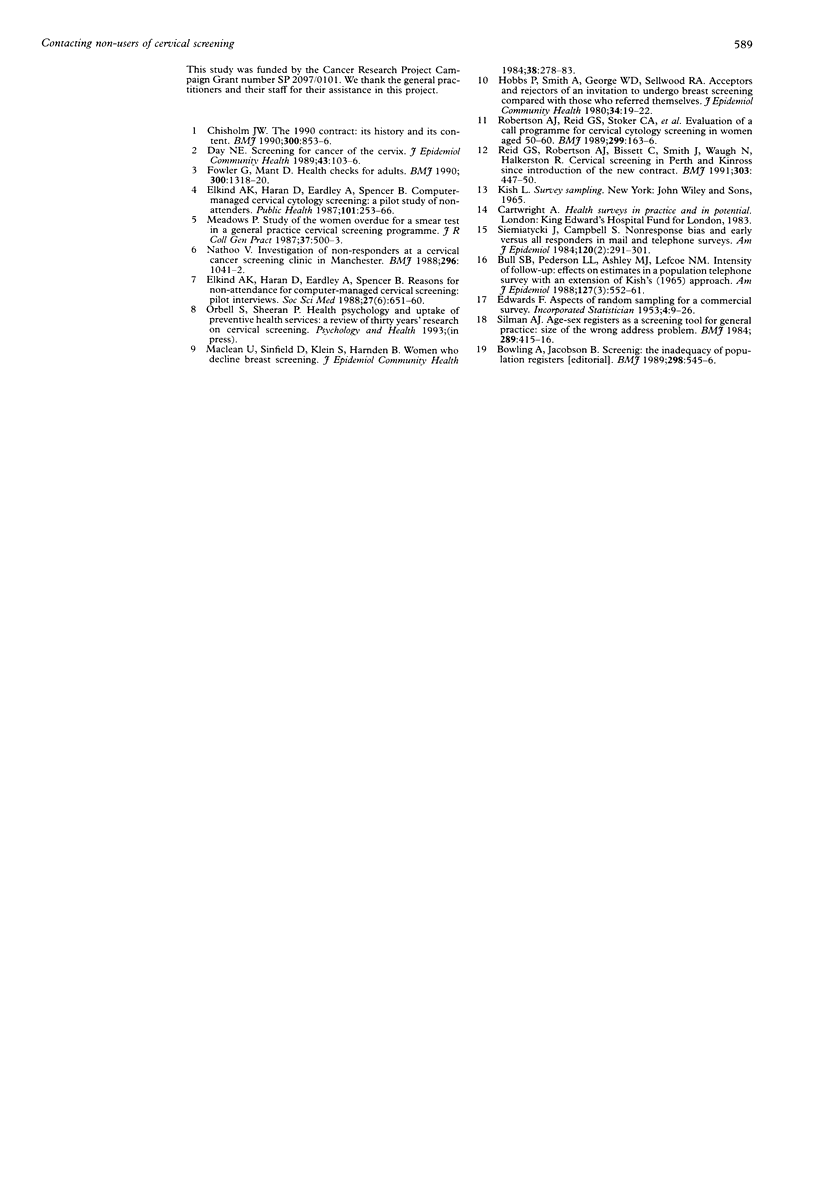Abstract
OBJECTIVE--To investigate the numbers of visits required to obtain interviews with users and non-users of cervical screening, and to determine the workload involved to enable an optimum visit plan to be developed. DESIGN--Case-control study of users and non-users of cervical screening using a flexible visit plan that involved up to eight attempts at contact. Visits were made in mornings, afternoons, and evenings, the visit pattern being determined by information gained from local sources. PATIENTS--Altogether 660 non-users of cervical screening (cases), aged 20-64 and registered with 23 randomly selected general practitioners (GPs), were identified from the Tayside computerised register of cervical smears. These women were selected from the computerised lists of 18 GPs in Dundee and five in Perth. A total of 417 women recorded as having a smear within the previous three years (controls), matched by age and GP, were also identified from the computerised register. RESULTS--Altogether 1834 attempts were made to contact the cases, of whom 339 were interviewed, giving a workload of 18 interviews per 100 attempts. For the controls 1359 attempts were made at contact to yield 339 interviews, a workload of 25 interviews per 100 attempts. Refusals (19%) and incorrect addresses (23%) were the two major reasons for failing to achieve interview. Only for four (0.6%) of the cases and one (0.2%) of the controls was no information gained. The proportion of attempts which led to interview remained constant with increasing numbers of call-backs (up to six for the cases and eight for the controls). CONCLUSIONS--A flexible approach to visit scheduling that takes account of local knowledge can lead to interviews with 66% of non-users of health screening, when incorrect addresses are removed. It is preferable to plan for many (up to six) visits to achieve interview. This will minimise non-response bias without increasing the workload per successful interview.
Full text
PDF



Selected References
These references are in PubMed. This may not be the complete list of references from this article.
- Bowling A., Jacobson B. Screening: the inadequacy of population registers. BMJ. 1989 Mar 4;298(6673):545–546. doi: 10.1136/bmj.298.6673.545. [DOI] [PMC free article] [PubMed] [Google Scholar]
- Bull S. B., Pederson L. L., Ashley M. J., Lefcoe N. M. Intensity of follow-up. Effects on estimates in a population telephone survey with an extension of Kish's (1965) approach. Am J Epidemiol. 1988 Mar;127(3):552–561. doi: 10.1093/oxfordjournals.aje.a114830. [DOI] [PubMed] [Google Scholar]
- Chisholm J. W. The 1990 contract: its history and its content. BMJ. 1990 Mar 31;300(6728):853–856. doi: 10.1136/bmj.300.6728.853. [DOI] [PMC free article] [PubMed] [Google Scholar]
- Day N. E. Screening for cancer of the cervix. J Epidemiol Community Health. 1989 Jun;43(2):103–106. doi: 10.1136/jech.43.2.103. [DOI] [PMC free article] [PubMed] [Google Scholar]
- Elkind A. K., Haran D., Eardley A., Spencer B. Computer-managed cervical cytology screening: a pilot study of non-attenders. Public Health. 1987 Jul;101(4):253–266. doi: 10.1016/s0033-3506(87)80076-8. [DOI] [PubMed] [Google Scholar]
- Elkind A. K., Haran D., Eardley A., Spencer B. Reasons for non-attendance for computer-managed cervical screening: pilot interviews. Soc Sci Med. 1988;27(6):651–660. doi: 10.1016/0277-9536(88)90014-7. [DOI] [PubMed] [Google Scholar]
- Fowler G., Mant D. Health checks for adults. BMJ. 1990 May 19;300(6735):1318–1320. doi: 10.1136/bmj.300.6735.1318. [DOI] [PMC free article] [PubMed] [Google Scholar]
- Hobbs P., Smith A., George W. D., Sellwood R. A. Acceptors and rejectors of an invitation to undergo breast screening compared with those who referred themselves. J Epidemiol Community Health. 1980 Mar;34(1):19–22. doi: 10.1136/jech.34.1.19. [DOI] [PMC free article] [PubMed] [Google Scholar]
- Meadows P. Study of the women overdue for a smear test in a general practice cervical screening programme. J R Coll Gen Pract. 1987 Nov;37(304):500–503. [PMC free article] [PubMed] [Google Scholar]
- Nathoo V. Investigation of non-responders at a cervical cancer screening clinic in Manchester. Br Med J (Clin Res Ed) 1988 Apr 9;296(6628):1041–1042. doi: 10.1136/bmj.296.6628.1041. [DOI] [PMC free article] [PubMed] [Google Scholar]
- Reid G. S., Robertson A. J., Bissett C., Smith J., Waugh N., Halkerston R. Cervical screening in Perth and Kinross since introduction of the new contract. BMJ. 1991 Aug 24;303(6800):447–450. doi: 10.1136/bmj.303.6800.447. [DOI] [PMC free article] [PubMed] [Google Scholar]
- Robertson A. J., Reid G. S., Stoker C. A., Bissett C., Waugh N., Fenton I., Rowan J., Halkerston R. Evaluation of a call programme for cervical cytology screening in women aged 50-60. BMJ. 1989 Jul 15;299(6692):163–166. doi: 10.1136/bmj.299.6692.163. [DOI] [PMC free article] [PubMed] [Google Scholar]
- Siemiatycki J., Campbell S. Nonresponse bias and early versus all responders in mail and telephone surveys. Am J Epidemiol. 1984 Aug;120(2):291–301. doi: 10.1093/oxfordjournals.aje.a113892. [DOI] [PubMed] [Google Scholar]
- Silman A. J. Age-sex registers as a screening tool for general practice: size of the wrong address problem. Br Med J (Clin Res Ed) 1984 Aug 18;289(6442):415–416. doi: 10.1136/bmj.289.6442.415. [DOI] [PMC free article] [PubMed] [Google Scholar]


